After spending a full day at Jaipur, we started for Bikaner in the next morning. A breakfast with Aloo Paratha, Curd, Various Veg Pakora at a good roadside Dhaba would give you the joy for your stomach. It will also save your time from lunch time to accelerate your wanderlust.
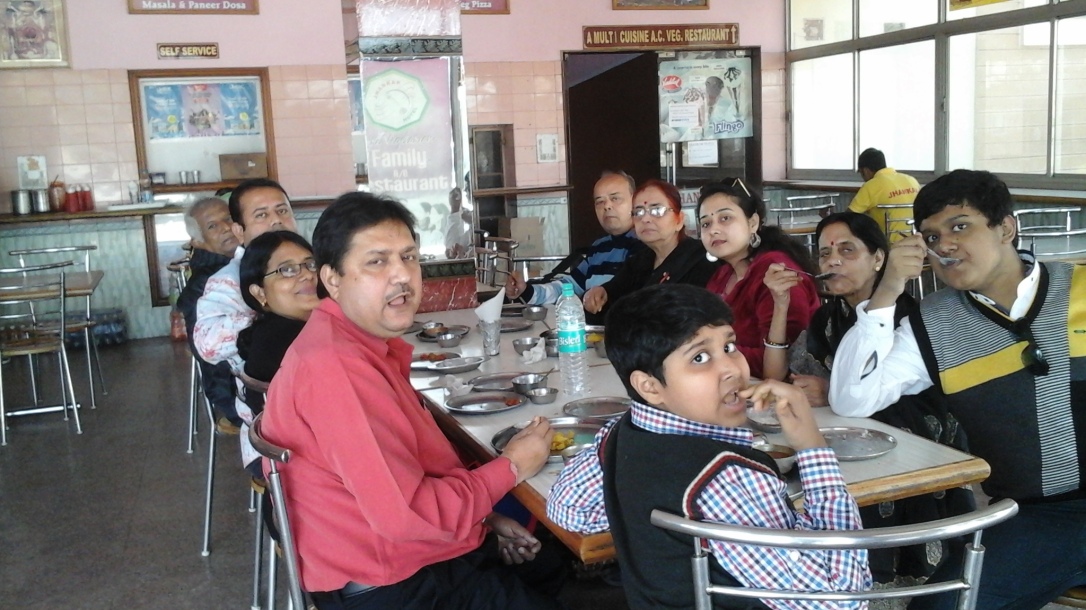
The distance between Jaipur to Bikaner is 335 Km(approx..) by road and a Tempo Traveller takes 6 hr to 6.30 hr. Such a long journey is never boring as the road (NH 11) is wide, hassle-free and comfortable. We took our breakfast and began our journey through the Aravallis to the desert-city Bikaner.
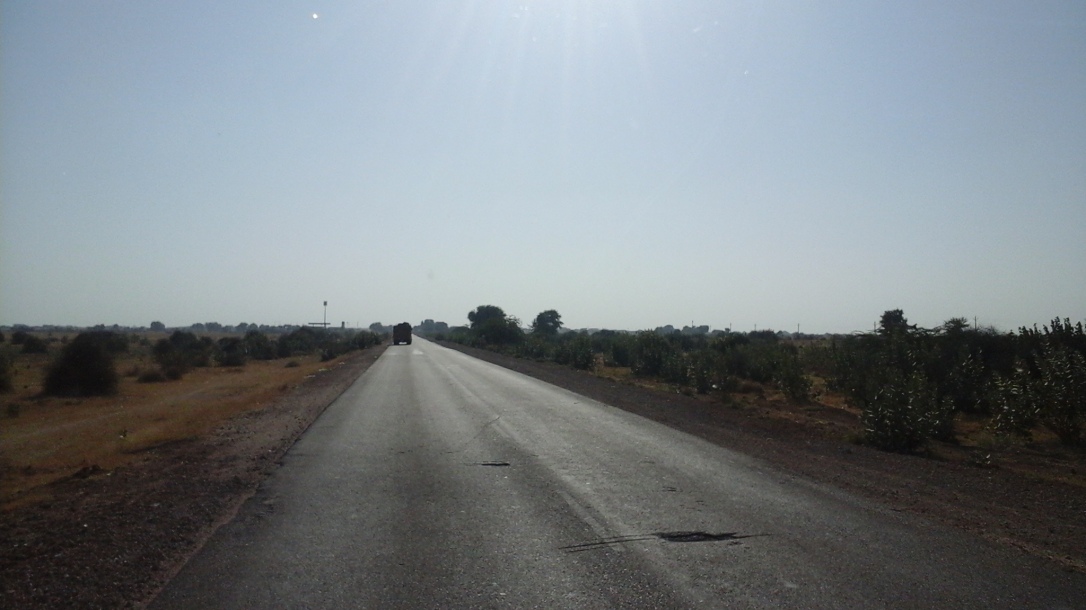
National Research Centre on Camel
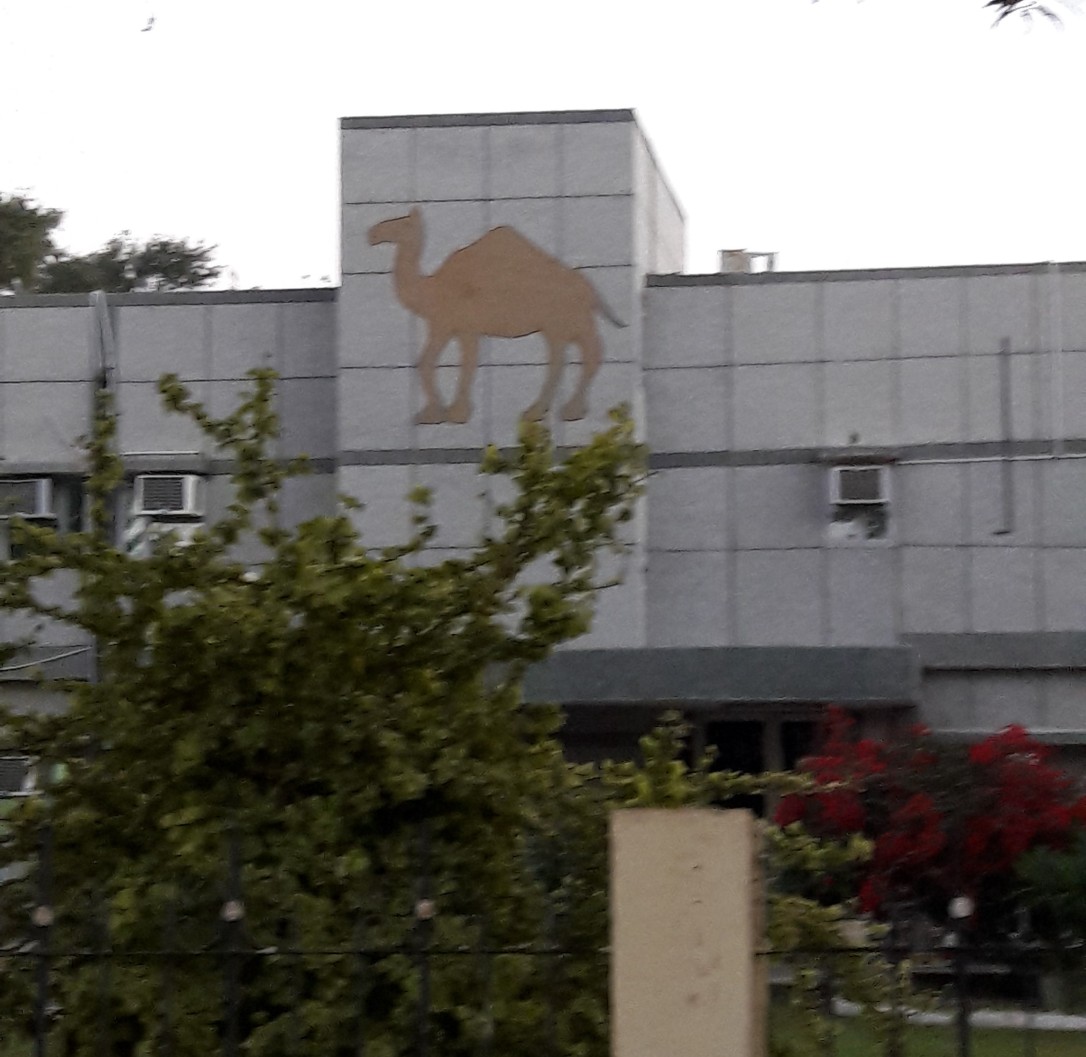
We reached at NRCC around 4 pm. Ice cream made of camel milk is available at the ticket counter at the entrance. While licking the milk ice cream, I realised that I have ignored Camel always, never ever gave any importance to this ship of the desert. Feeling guilty of my ignorance, Camel.I devoured another ice- cream and I vowed to learn as much possible about Camel.Here we found 4 types of camels: Bikaneri, Jaisalmeri, Kachchhi and Mewari. The guide will help you how to identify each of its types. A newborn Camel baby, born just 6 hours ago, was being cuddled by its mum and neighbours— charm of life is the charm of life.
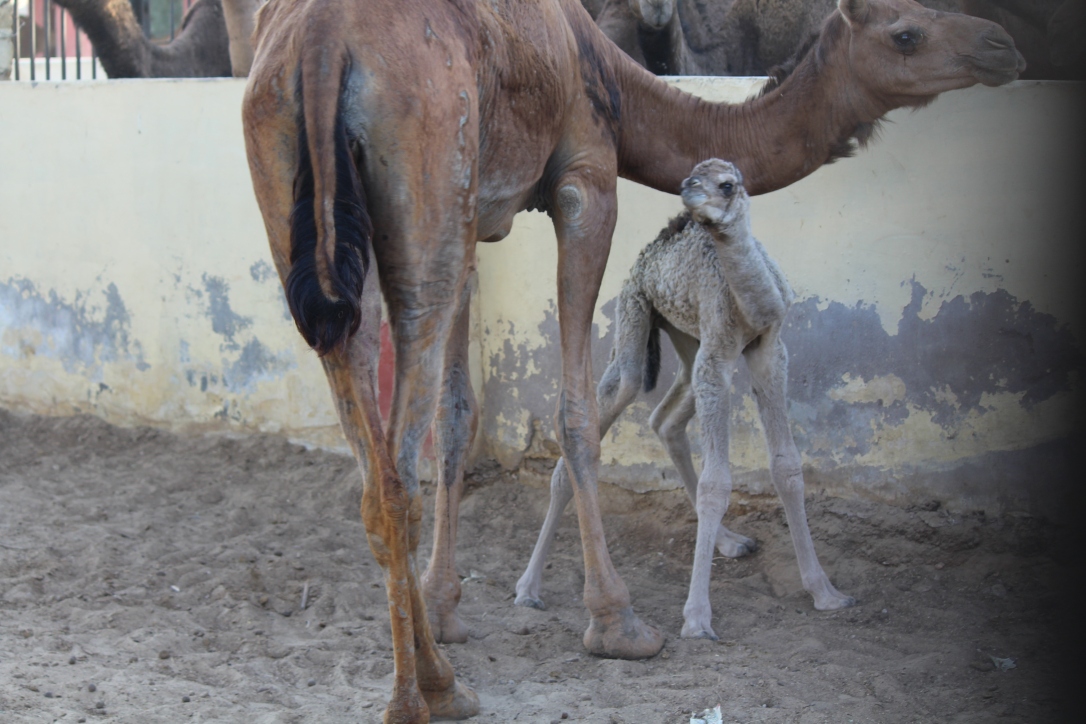
This is the usefulness of drinking camel milk.
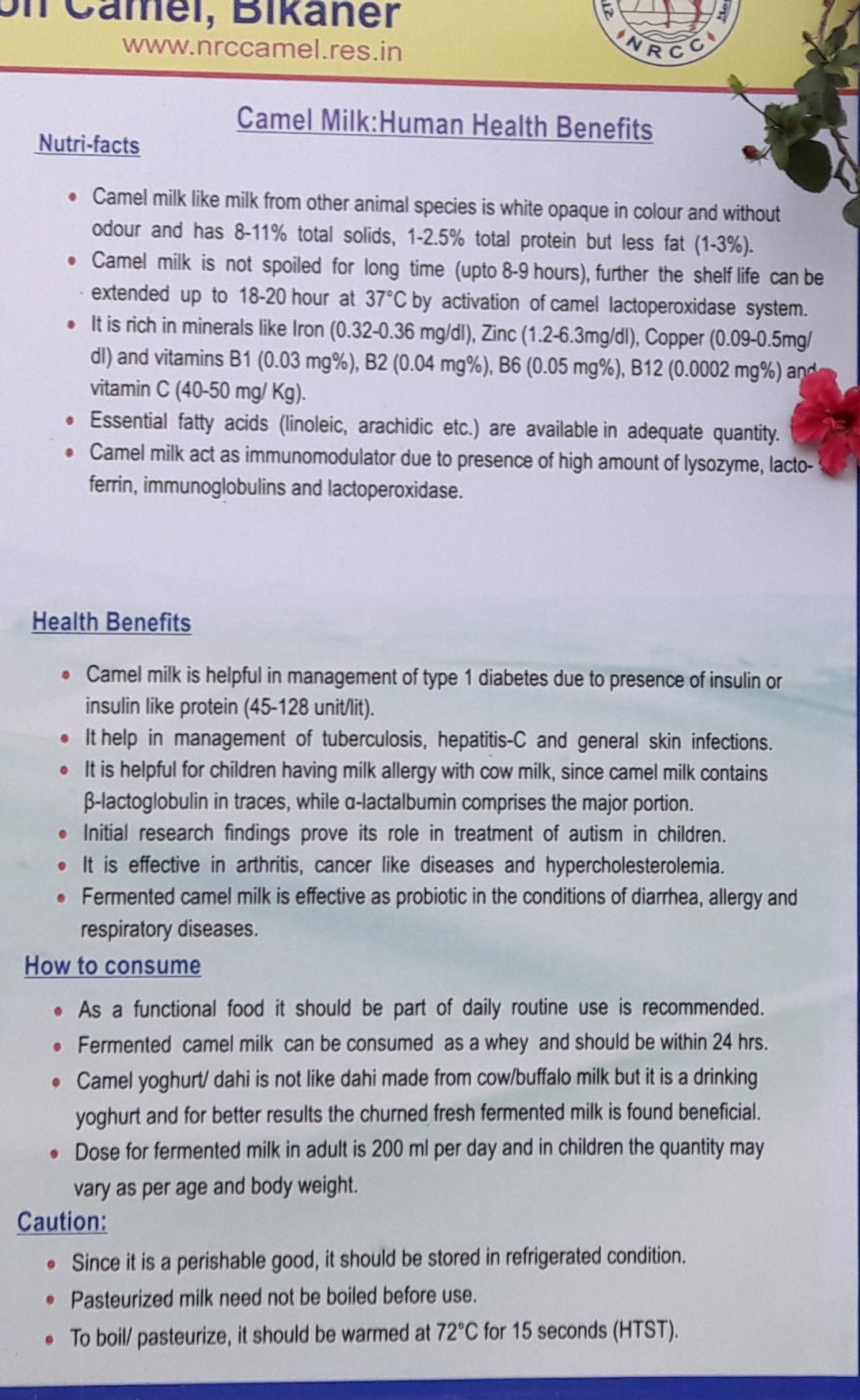
All these reminded me of an incident of my childhood. We used to live in a suburban town and my father had to catch hugely crowded local trains to reach the city to his workplace. Out of frustration he often fantasised,” Soon I’m going to buy a camel to go to my office.” I was always confused why he choose camel leaving other fast animals. At the NRCC I found my answer…..royalty and grandeur. My father wanted to beat the middle-class daily drudgery by selecting Camel as his transport. When I said all these to him standing at NRCC, he casually said, “Why don’t you ask them if they sell camels?” I didn’t but felt proud to know the world of camels.
Bags, shoes, hair clips, shawls etc. are available at the souvenir shop here. These are made of camel fur, bone and leather. Something can be taken as a memoir or gift as the price is reasonable.
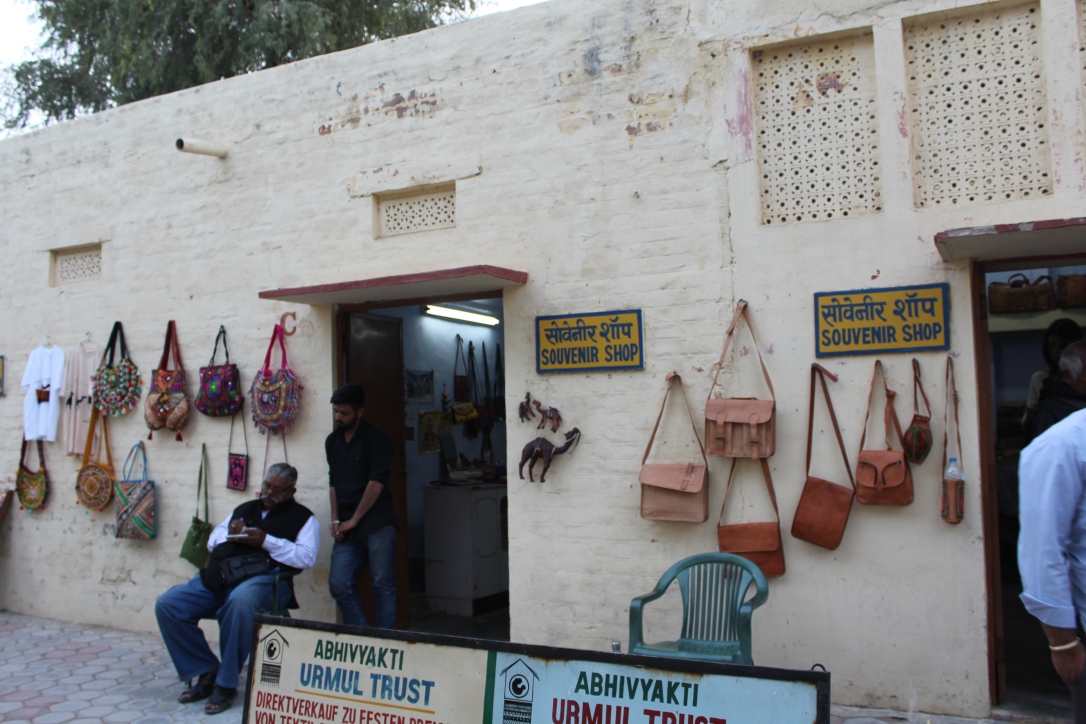
Museum
Camels eat various kinds of crops and grasses and all these are exhibited at the museum.
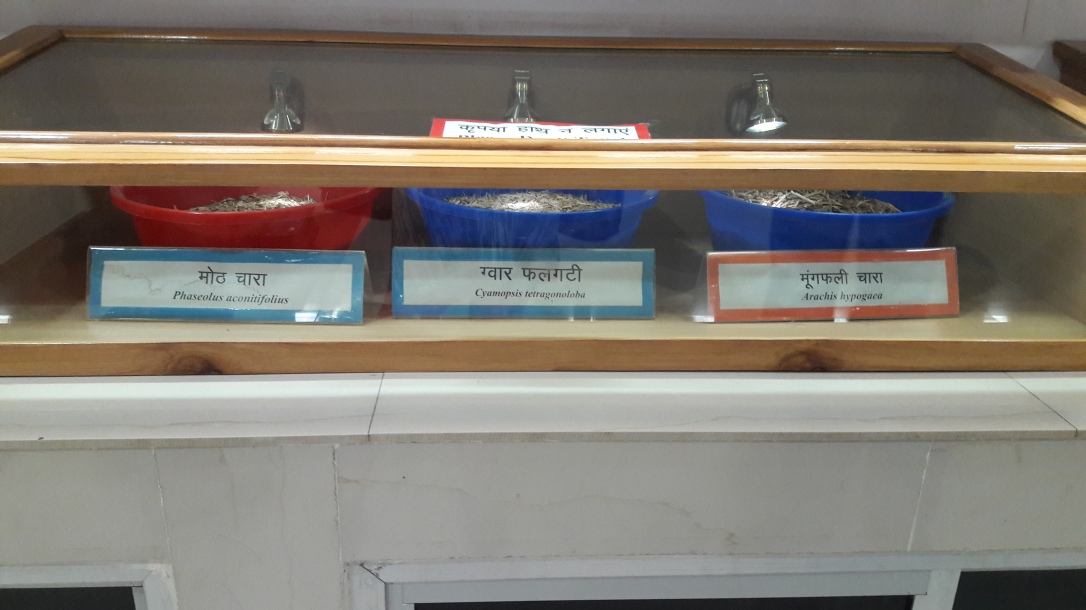
Historical moments where camels showed their bravery are also picturized here. The museum is small but informative.
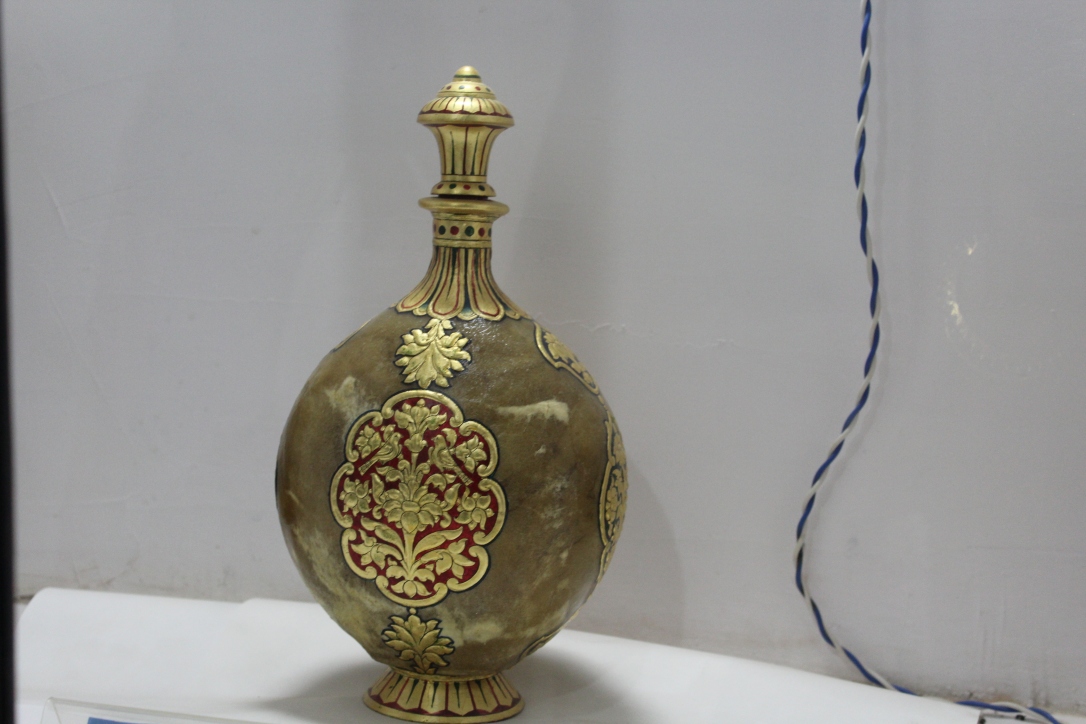
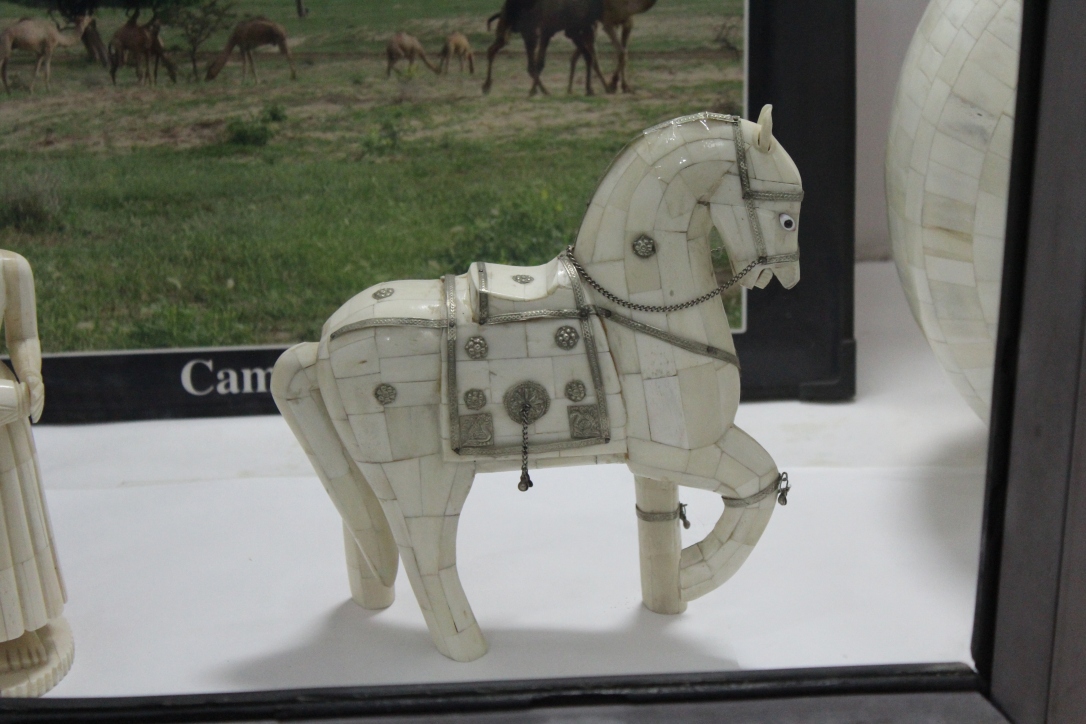
The project is simply great and entertaining.
Karnimata Temple:
A temple full of rats, rats are taken care of, rat-eaten Prasad in high demand, people wait long to see white rats—- sounds impossible? Very much possible at Karni Mata Temple at Deshnok Gunge, Bikaner. Karnimata was a sage and honoured by the royal family. She is still worshipped as the reincarnation of Devi Durga. There are two more temples of Karnimata, one at Machla Hill in Udaipur and the other at Alwar district in Rajasthan.
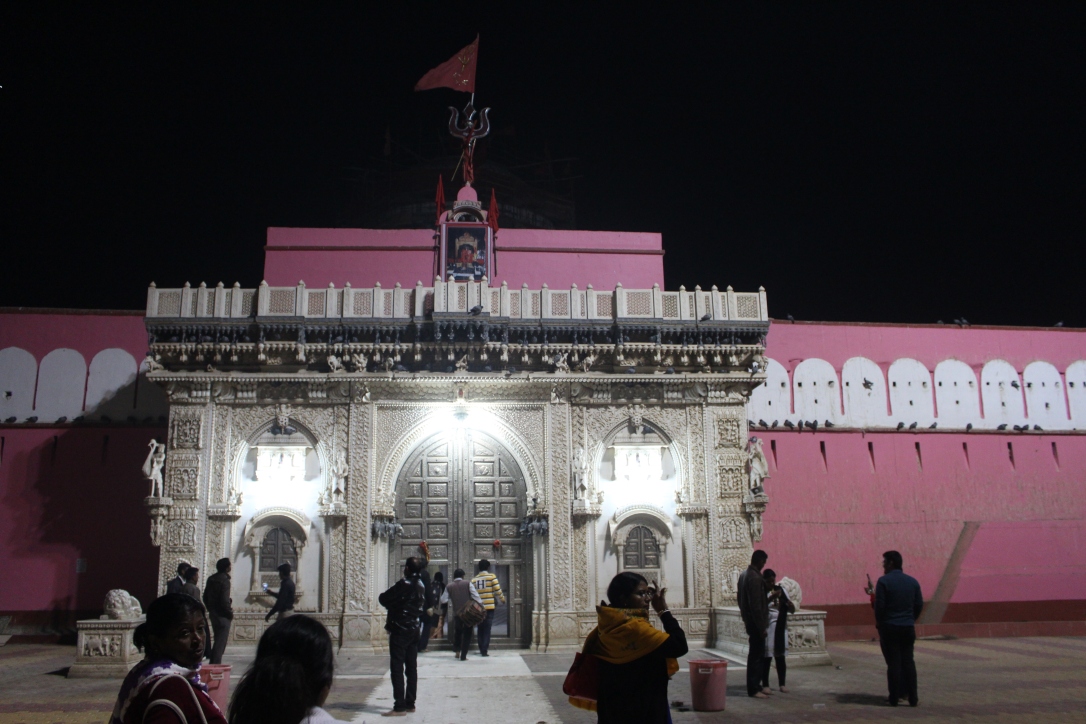
The open area of the temple is covered by a net to save the rats from preying birds. Rats have special importance as they are living, in the guise of rats here under the instruction of the Karnimata. It happens in India only, a land of faith and worship.
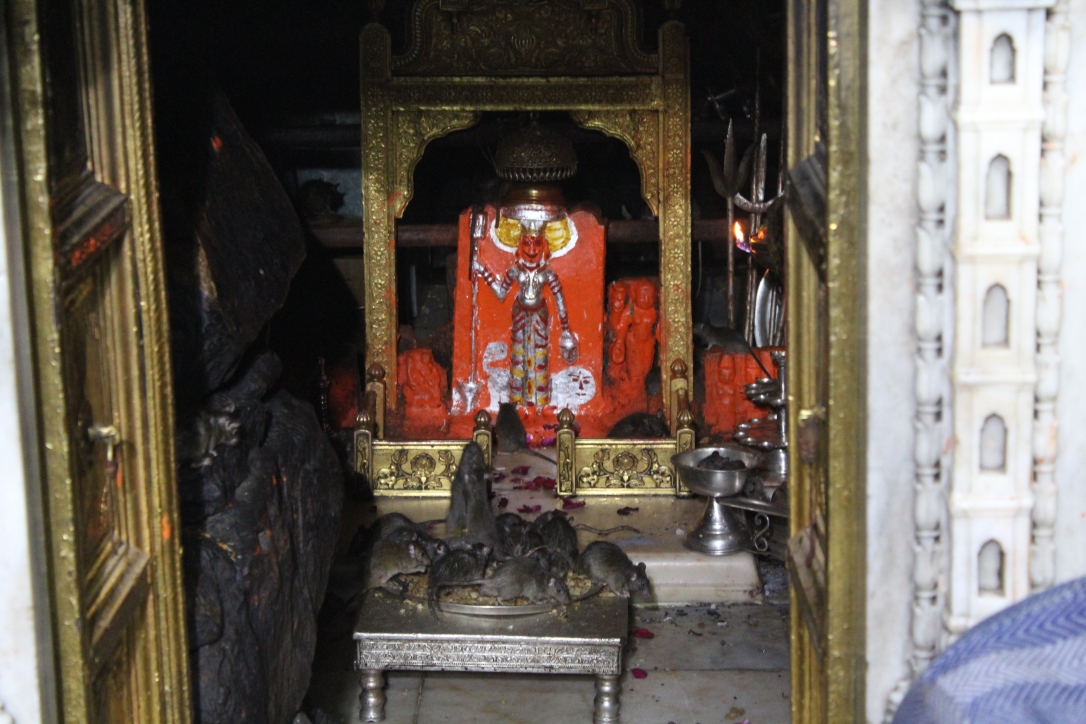
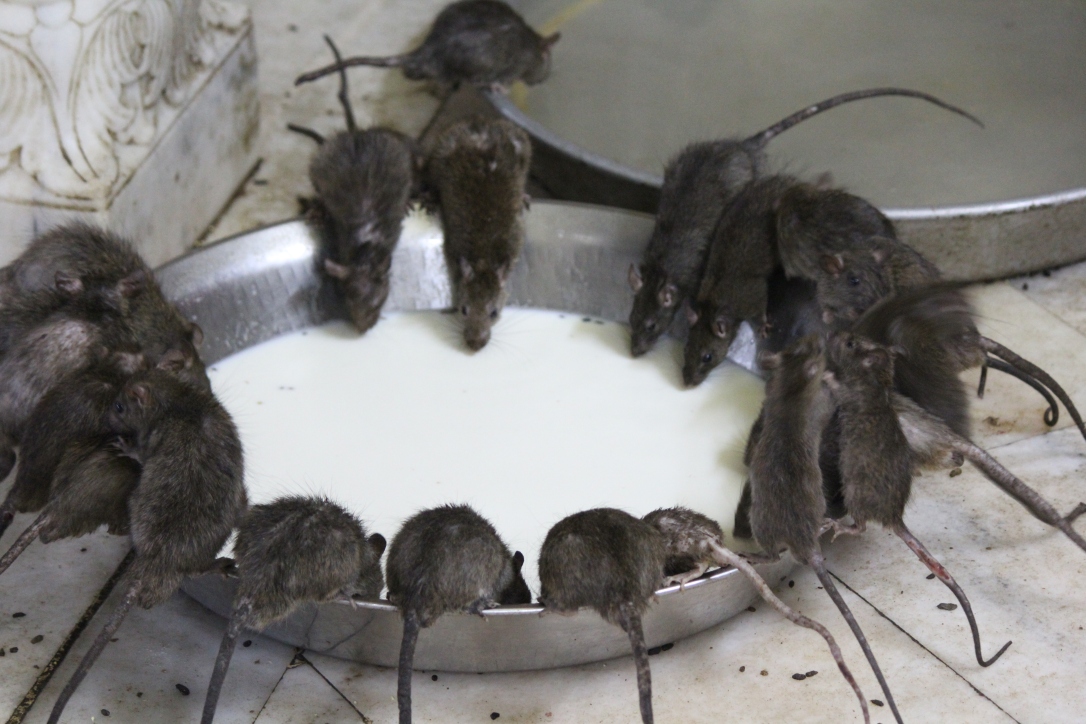
A local Rajasthani singer is accompanied by a drum player with a big copper drum. The total affair is really—mouse-ical!!
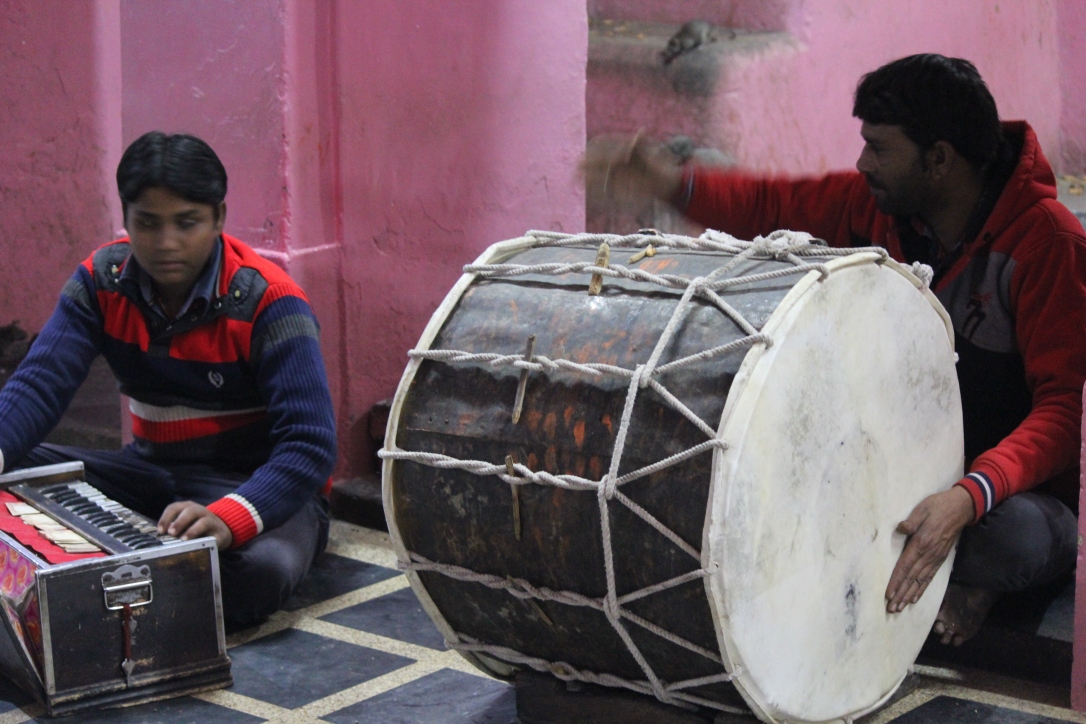
Back to our hotel found that Lal Garh palace was glowing at night not very far from our hotel.
Lal Garh Palace:
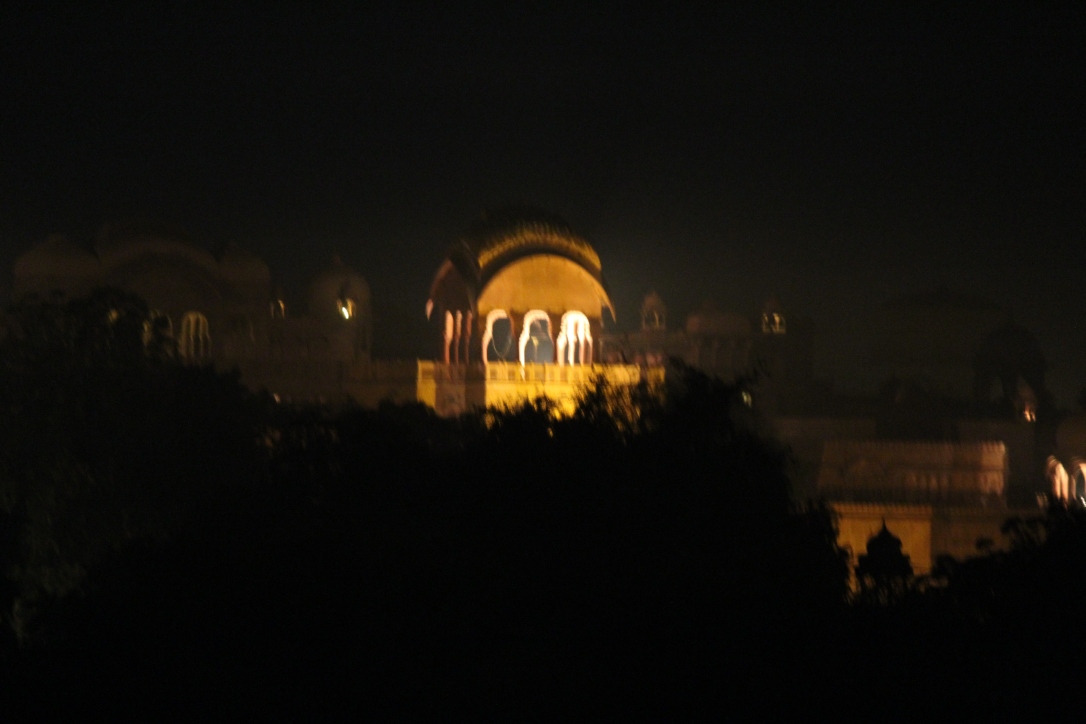
Built in red sandstone, among the lush green arena, the palace looks gorgeous and elegant. Presently, the royal family resides here and some part of the palace is used as the heritage hotel.
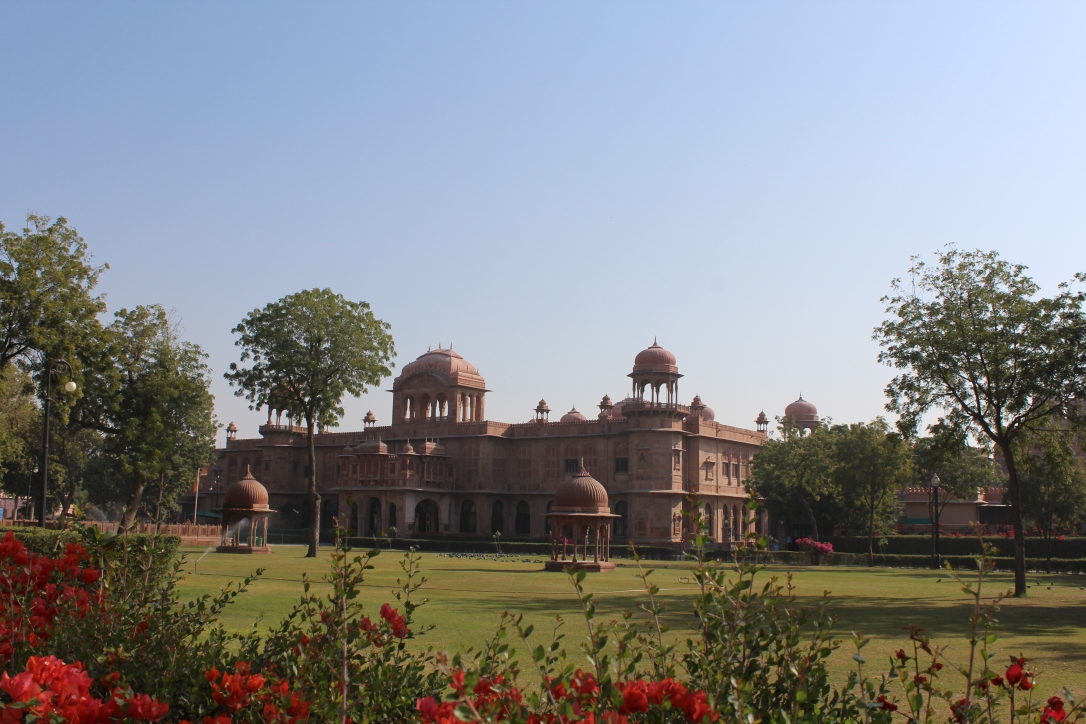
Sadul museum here displays various artefacts of three successive Maharajas of Bikaner i.e. Maharaja Ganga Singhji, Maharaja Sadul Singhji & Maharaja Karni Singhji in 22 rooms.
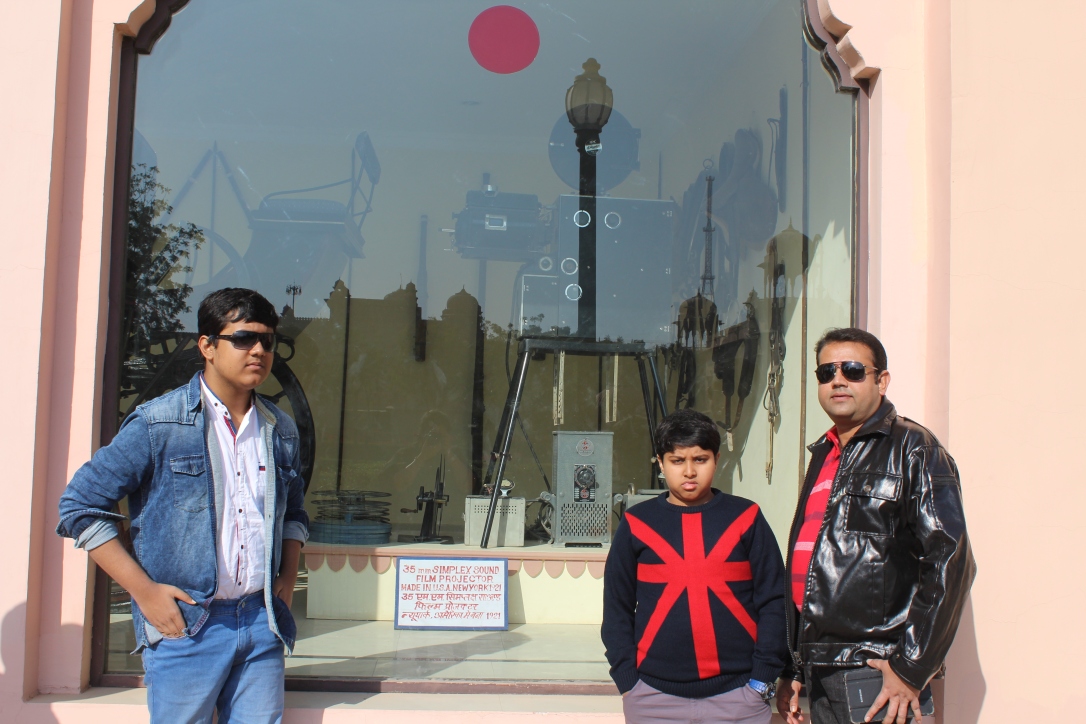
Junagarh Fort:
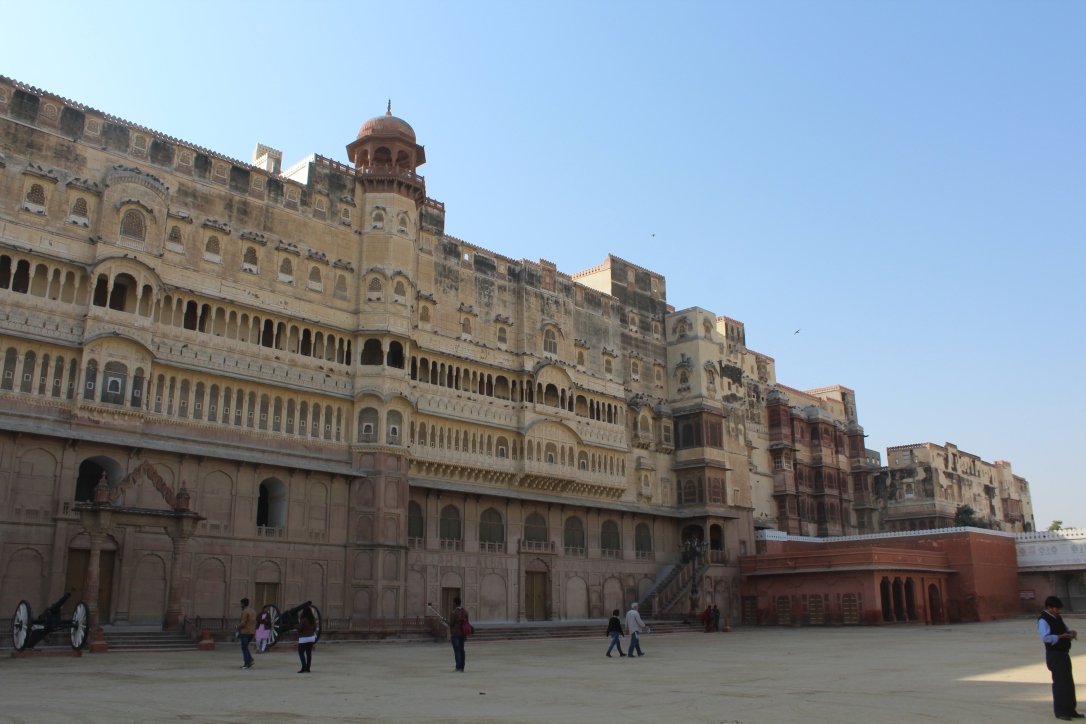
Formidable is an underrated word for Junagarh fort, ‘awestruck’ is the correct one for me. Yes, this is a fort at land unlike the most of the Rajasthani forts on hilltops, in front of which I stood mesmerised for moments. Built in1588 A.D by Raja Rai Singh, a general in the army of emperor Akbar, is encircled by a moat and has some beautiful palaces within.
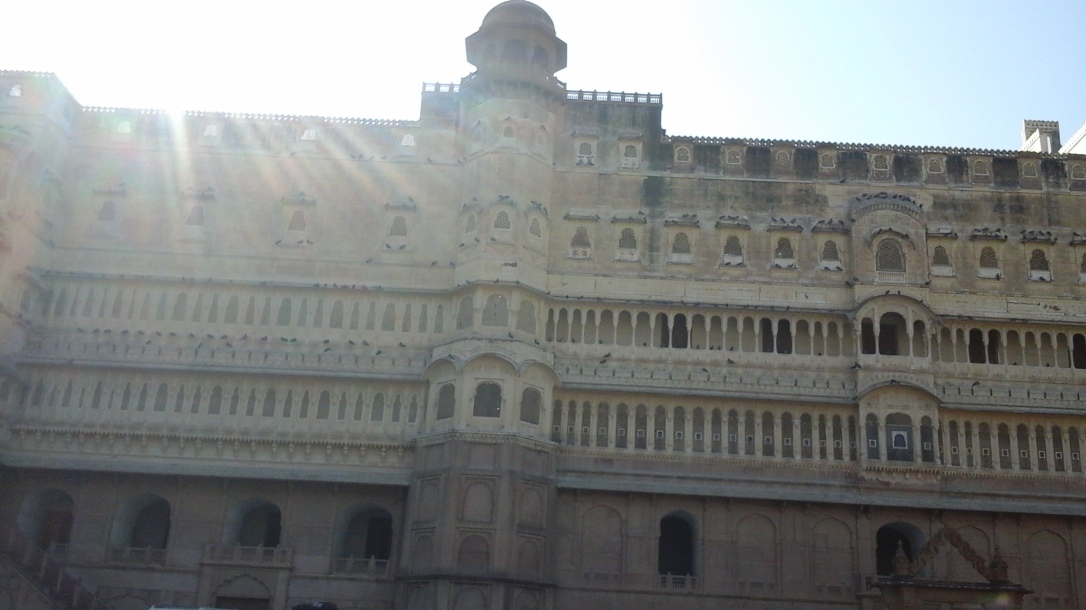
A guide- manual or audio is a must here. Entering through the first gate of the fort there are stairs built in Rajasthani Style.
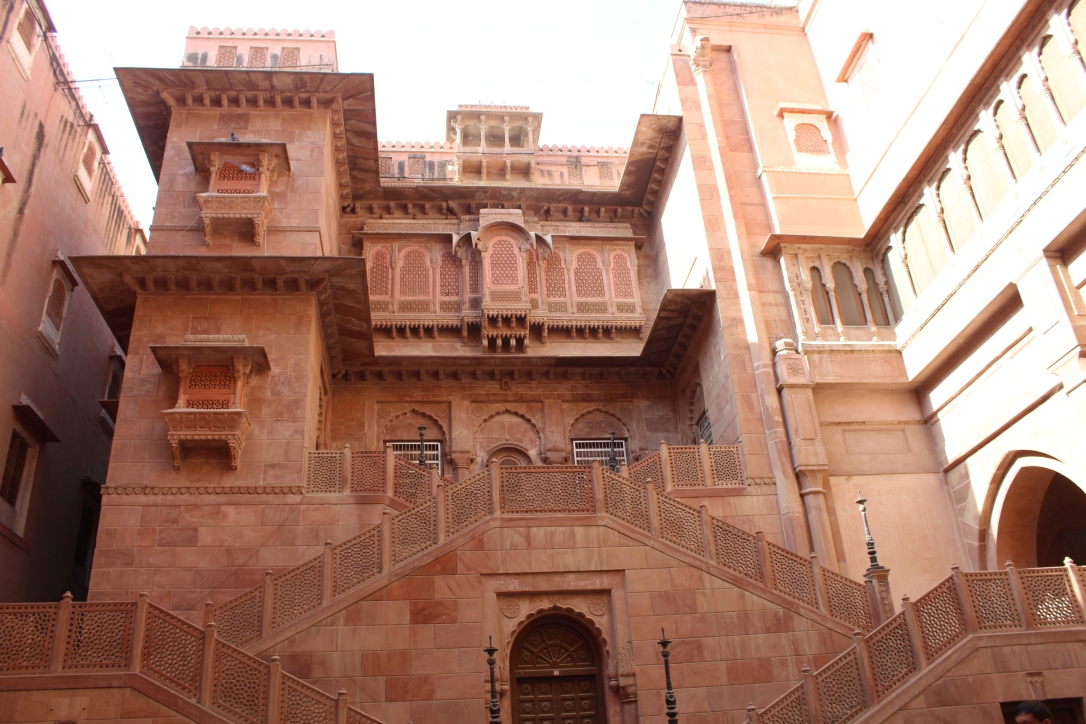
Now I am going to describe the palaces within this fort as we have seen them.
Karan Mahal
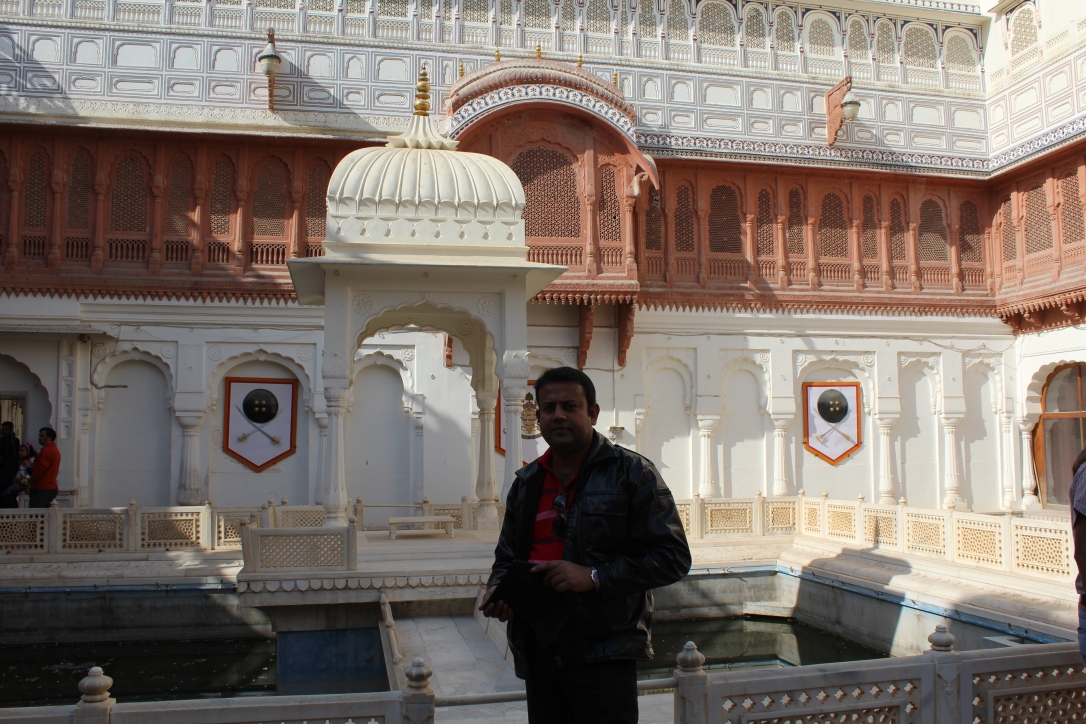
This palace is a blending of Rajasthani and Mughal Architecture. Maharaja Gaj Singhji hired craftsmen of the Mughals Court from Delhi and Lahore and employed them to built this palace. Four Chatris and a small water tank is decorated here for the King to play Holi with the queens.
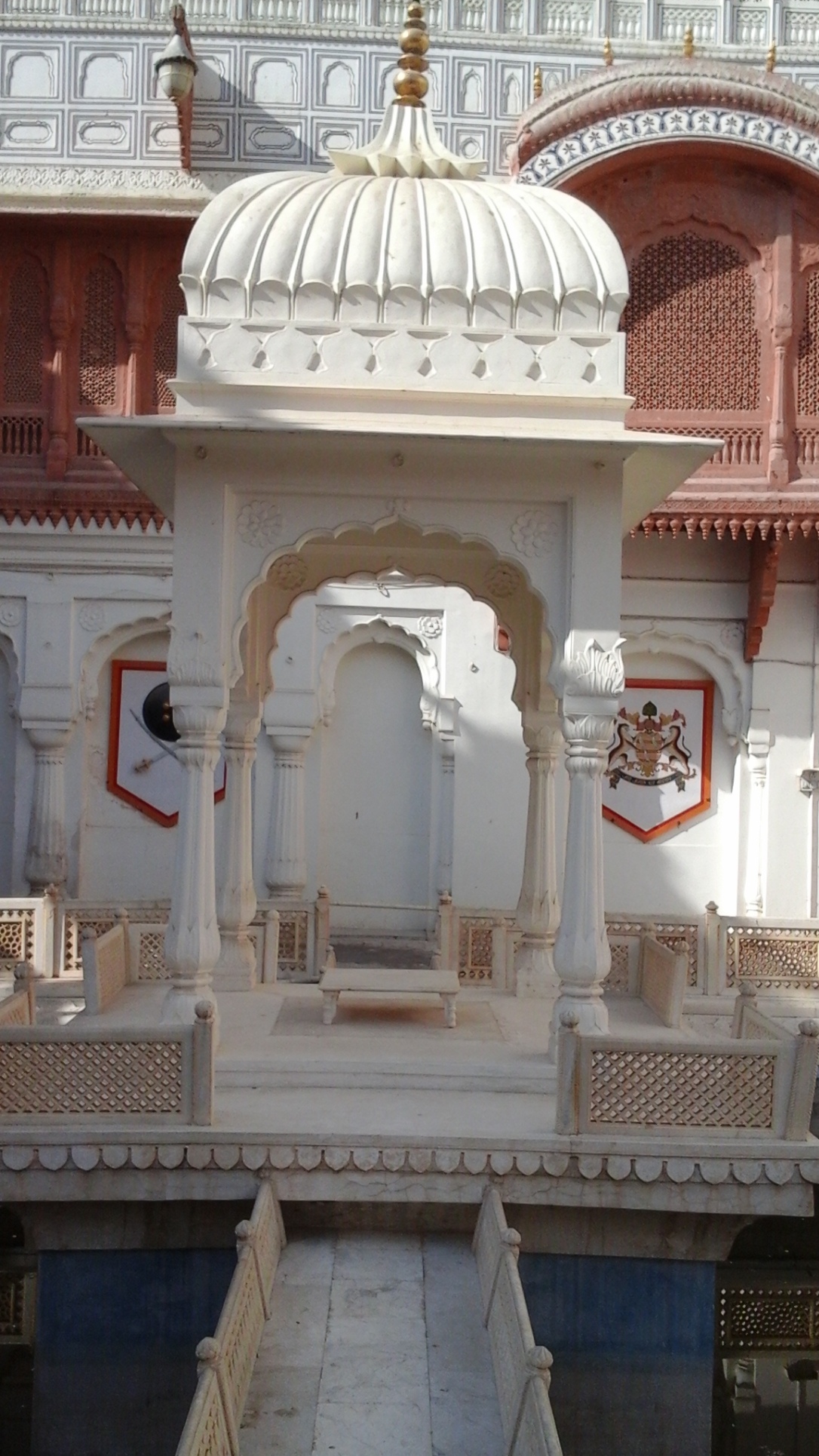
Phool Mahal
I am sure no one can leave this palace without imagining himself or herself as a prince or a princess of any fairy tale. A palace decorated with colourful flower pots, flowers and designs will take away you to an imaginary land of dream.
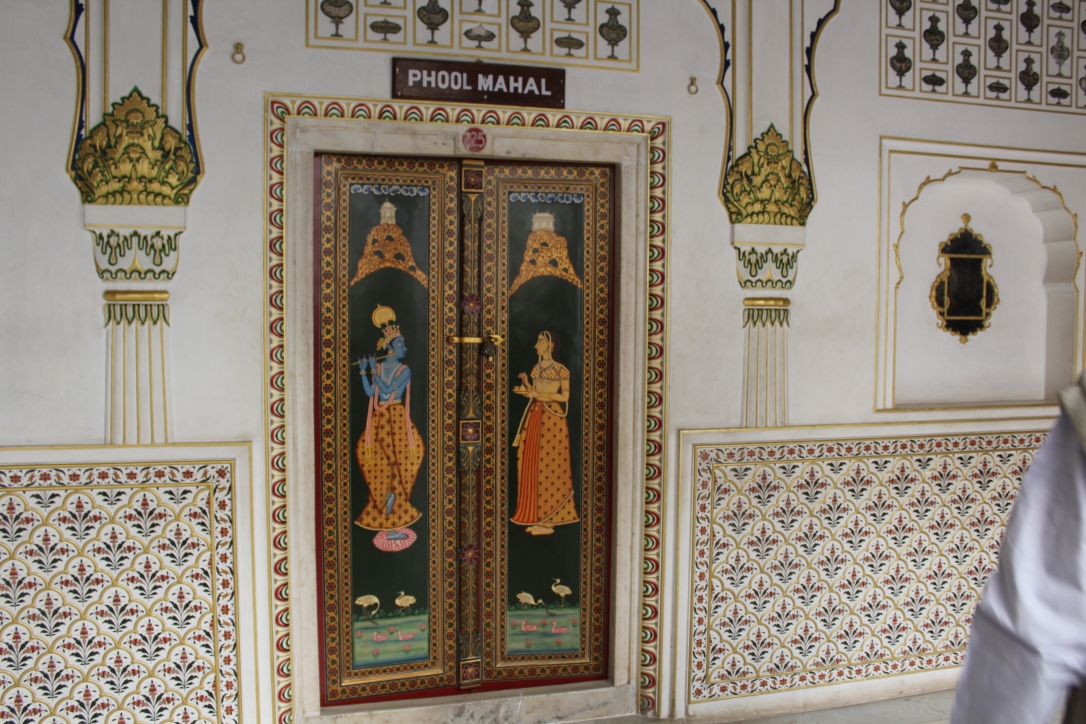
Anoop Mahal
I couldn’t think of coming back to my city when I was standing at Anoop Mahal. A world of golden fancy, a colourful repose to one who has been long in the city pent, was hypnotic. It is a must see if you come to Bikaner even for once.
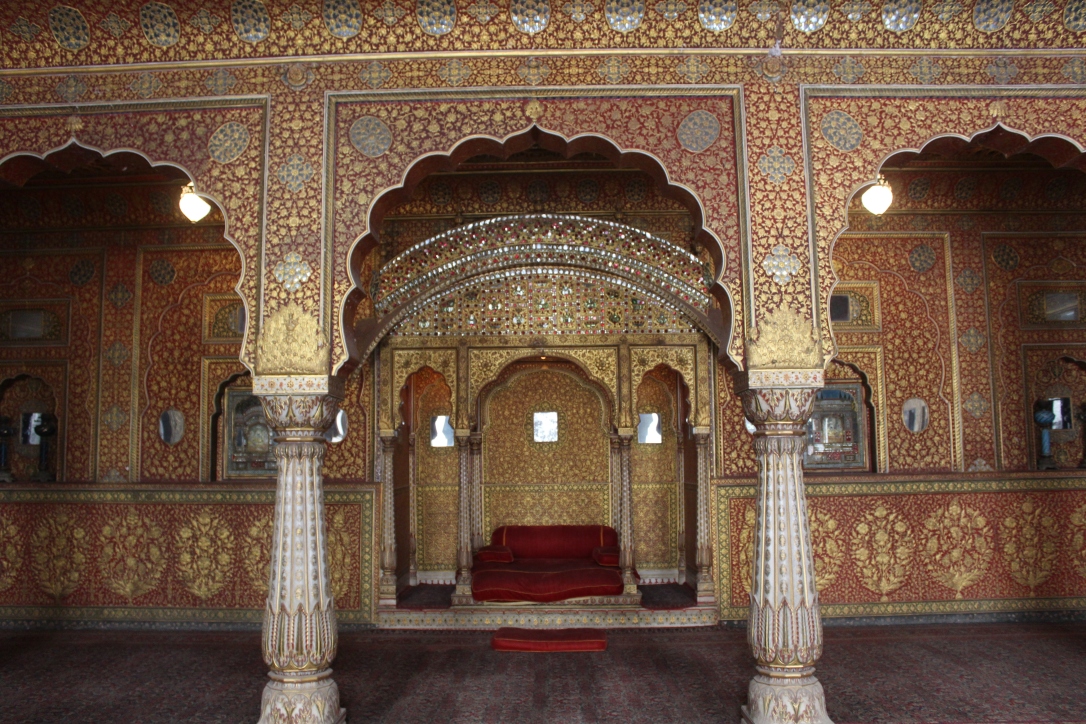
Badal Mahal
Most part of Rajasthan is in the dry arid region. Therefore, scarcity of rain is a matter here. This palace was painted in blue with the idol of the Laxmi-Narayana to pray for rain to the rain god.
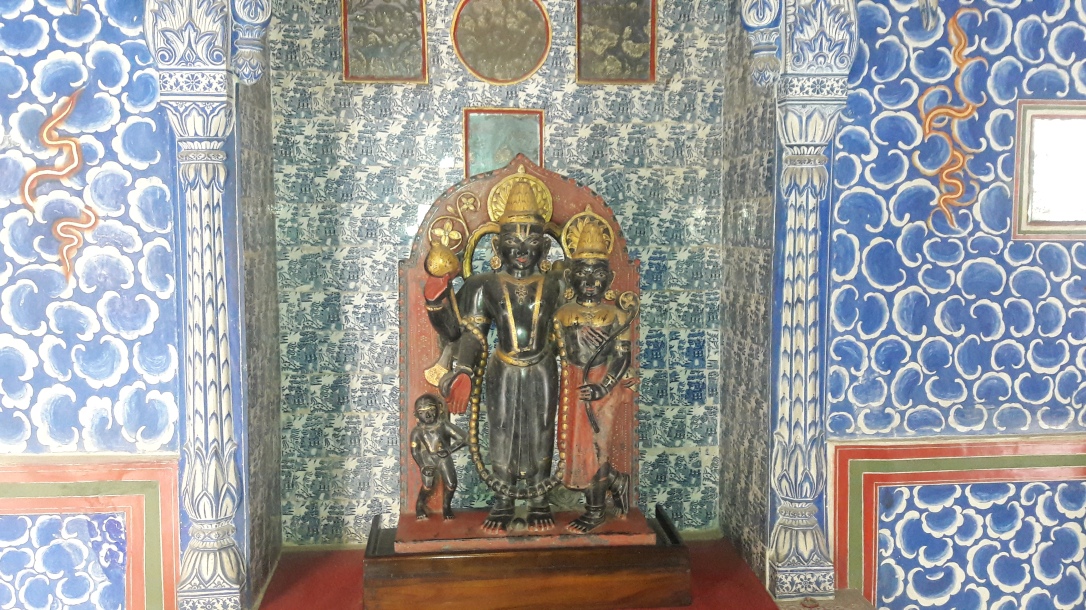
Gaj Mandir
This palace was built exclusively for Maharaja Gaj Singhji and his two queens.
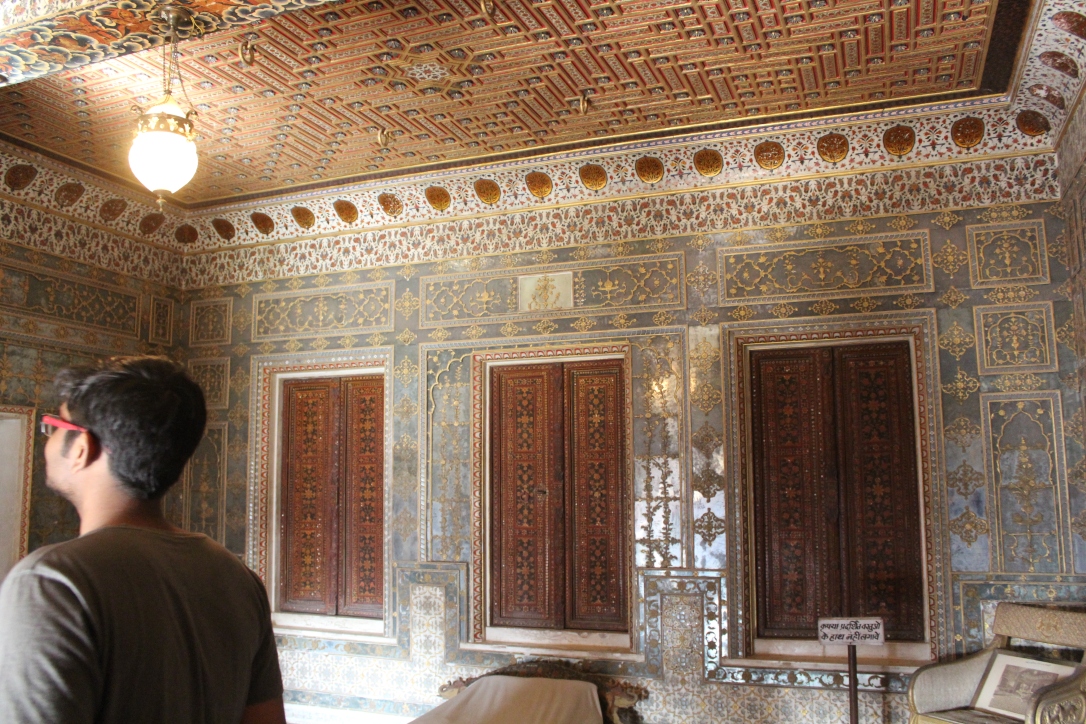
Dungar Niwas
This was the room of Maharaja Dungar Singhji, the founder of modern Bikaner. This palace is mainly designed on white. A mirror is placed at the top of each alcove in the walls. The image of the ruler used to reflect in these mirrors – an example of Narcissism. Now all these are yours. If you have the camera in your hand standing in front of the mirror then the mirror will take you as the king ( or the queen).
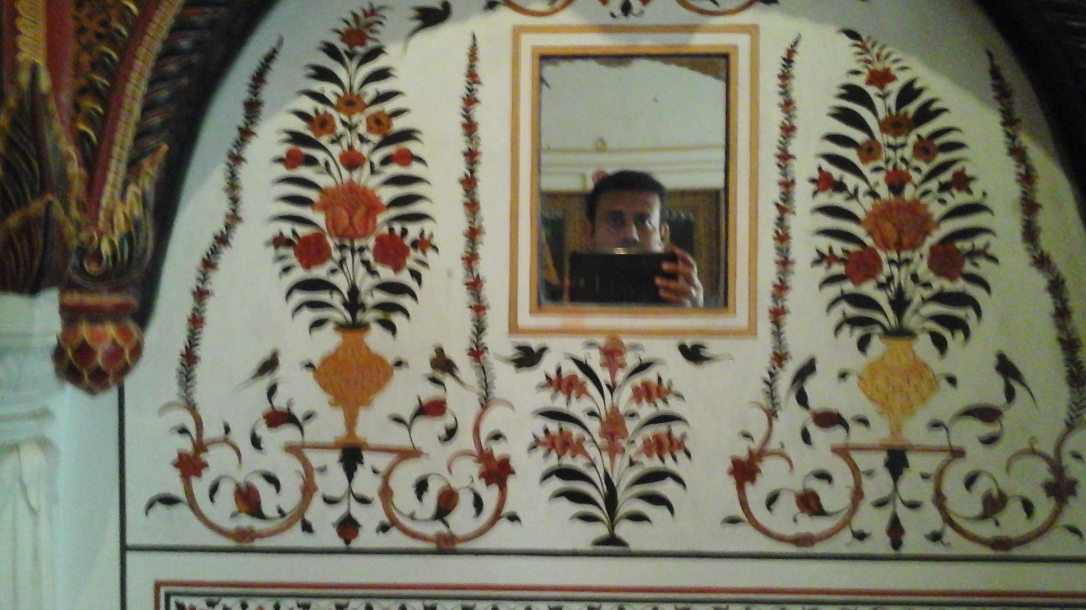
Darbar Hall
Here the sandalwood throne of Rao Bika, the founder of Bikaner is displayed. Some weapons of the royal family are also preserved. There is Vikram Vilas, it housed the collection of war souvenirs, elephant howdah .
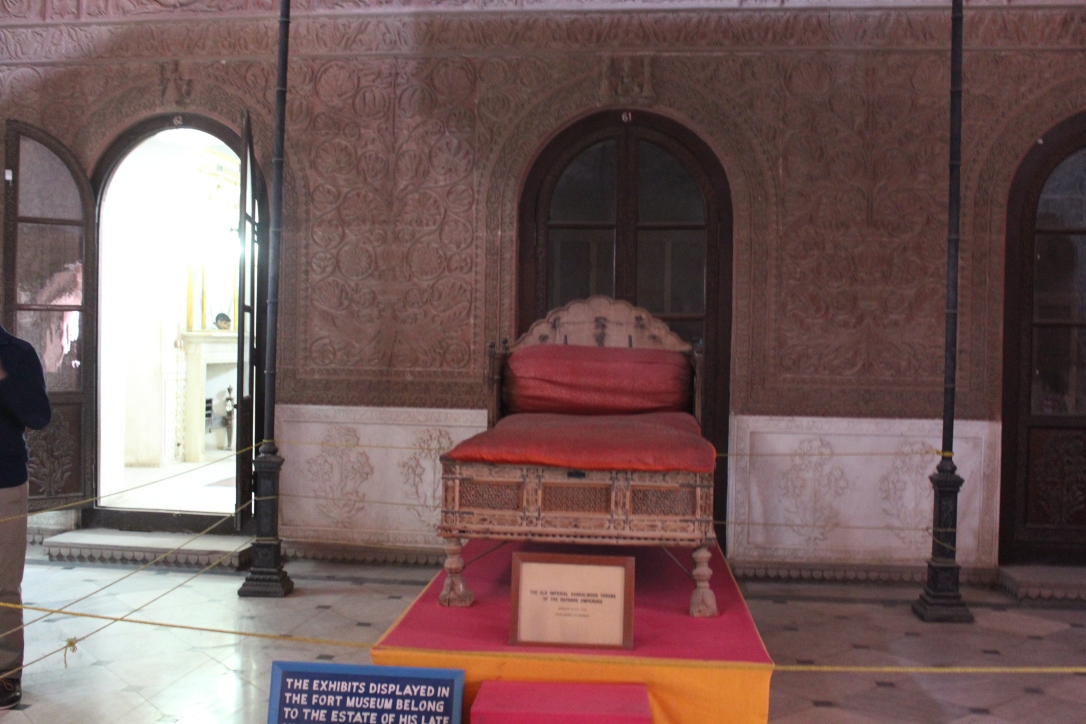
Junagarh Fort Museum
Armoury
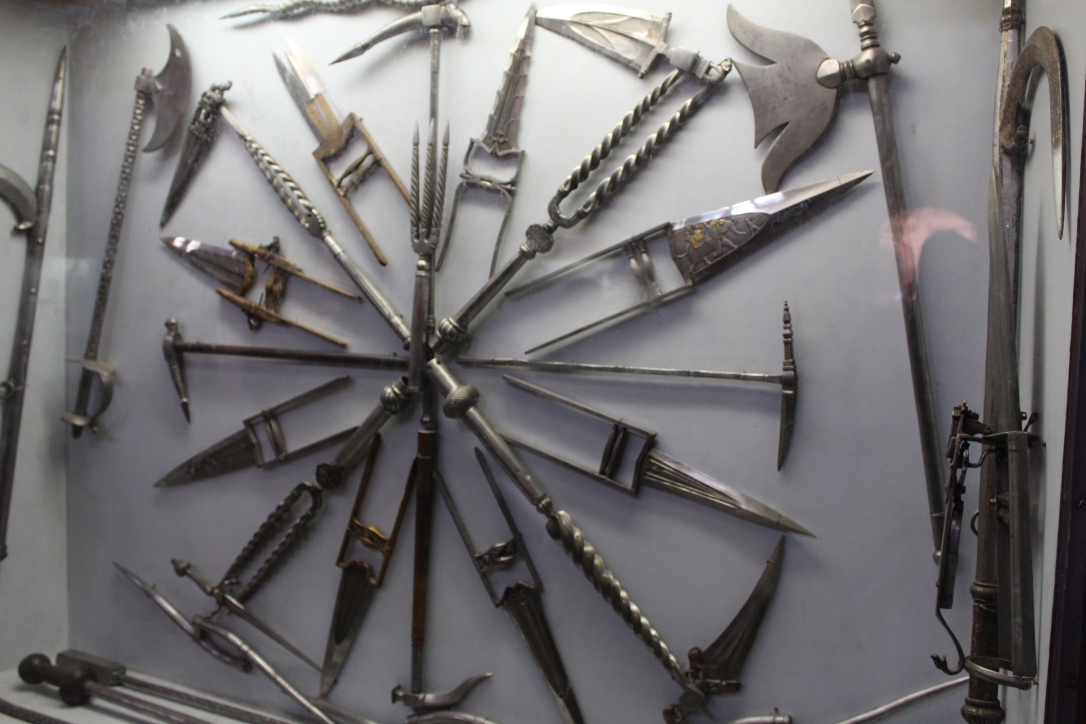
Displaying armoury is an art and when it reaches at the correct level, it gives a feeling of enjoyment not fear.
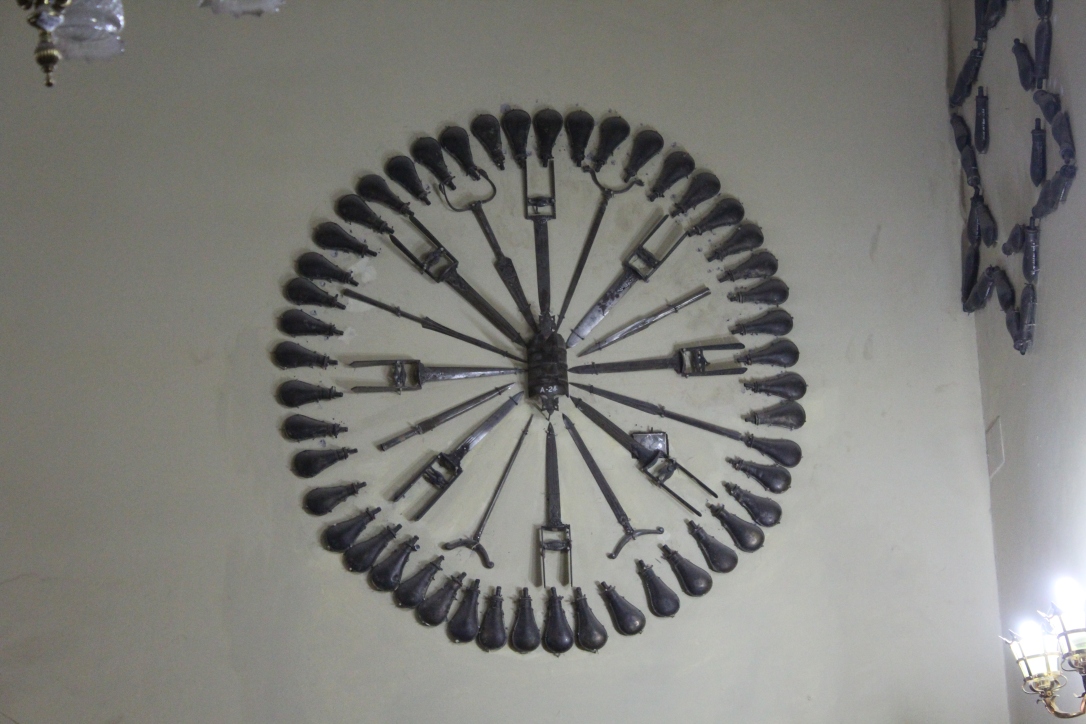
Rao Bikaji Heirloom Farmans Trust
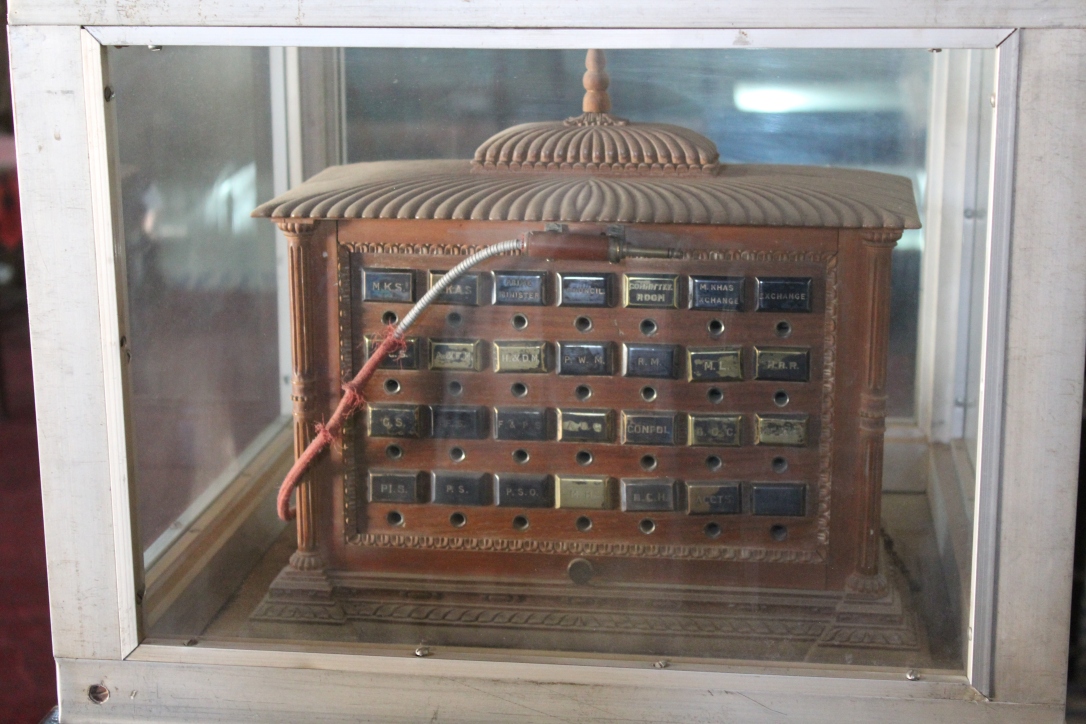
At the beginning of the 20th century the royal family left this fort and went to Lalgarh Palace for ever but donated the royal things under the guidance of the Trust for to exhibit them to the public.
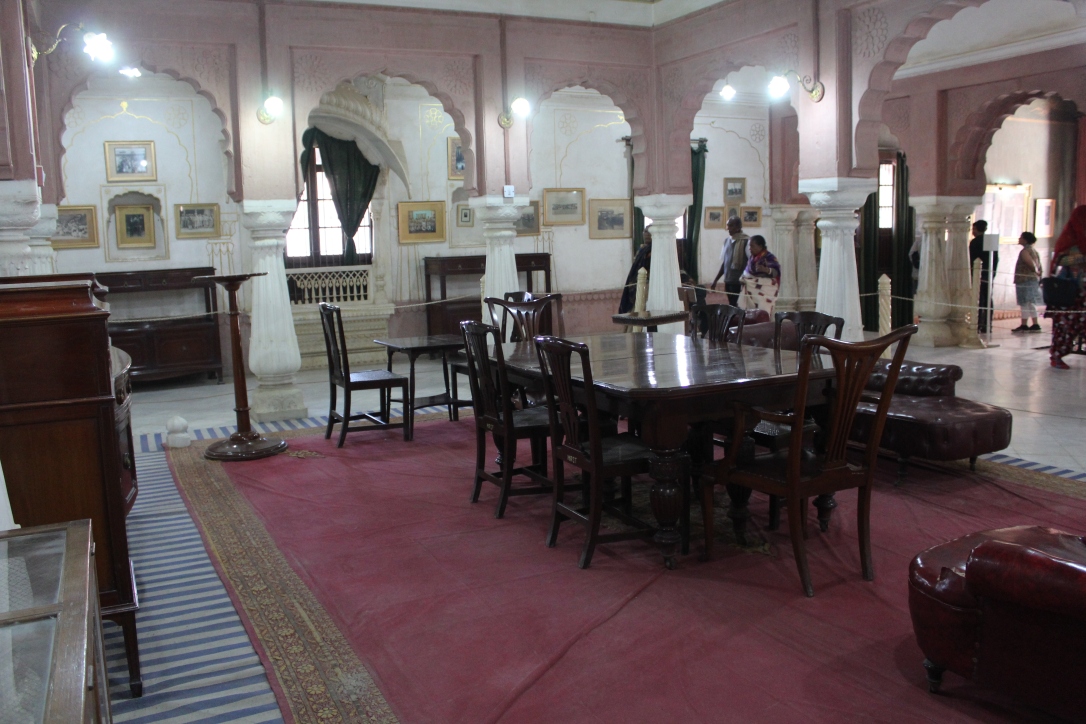
Transportation
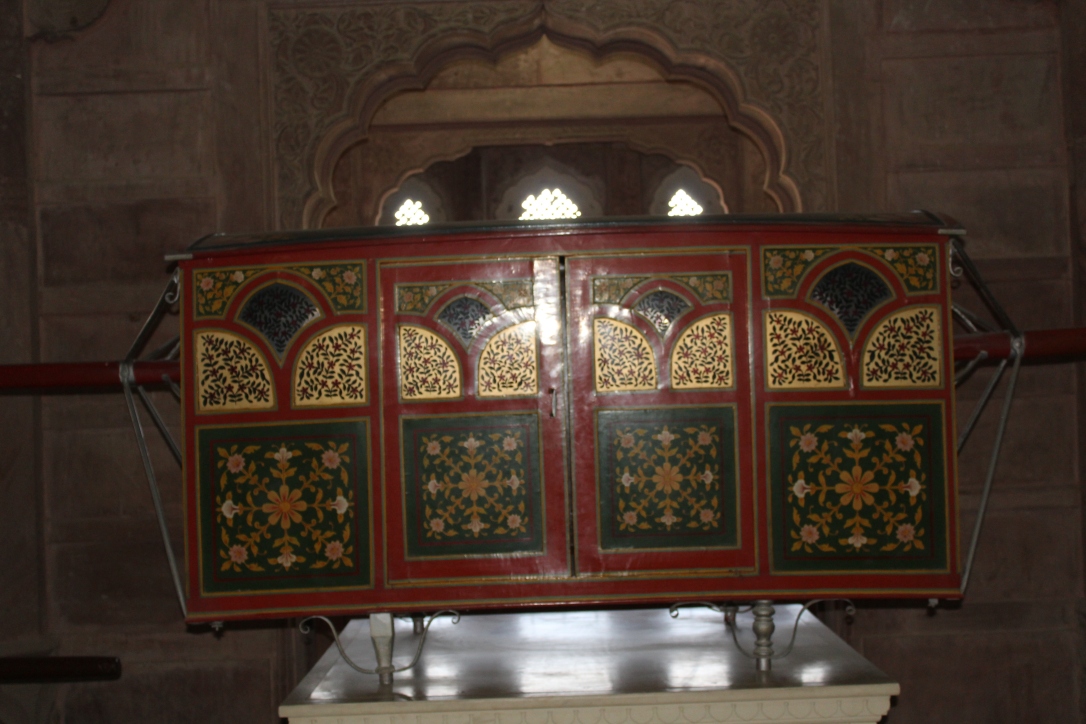
The fort museum houses the transports preserved and used by the royal family. Different palanquins are there. Among these were the Havilland helicopter that caught my attention. During the World war I, Maharaja Ganga Singhji helped the British with his Bikaner State Force and as a prize, after the war, he was given some souvenirs among which were the shot down parts of two DH-9DE Havilland war Planes. Under the guidance of Maharaja Karni Singhji, the craftsmen assembled one Havilland Plane in 1985 and now it is displayed in the museum. A prized possession is a Prize to be restored.
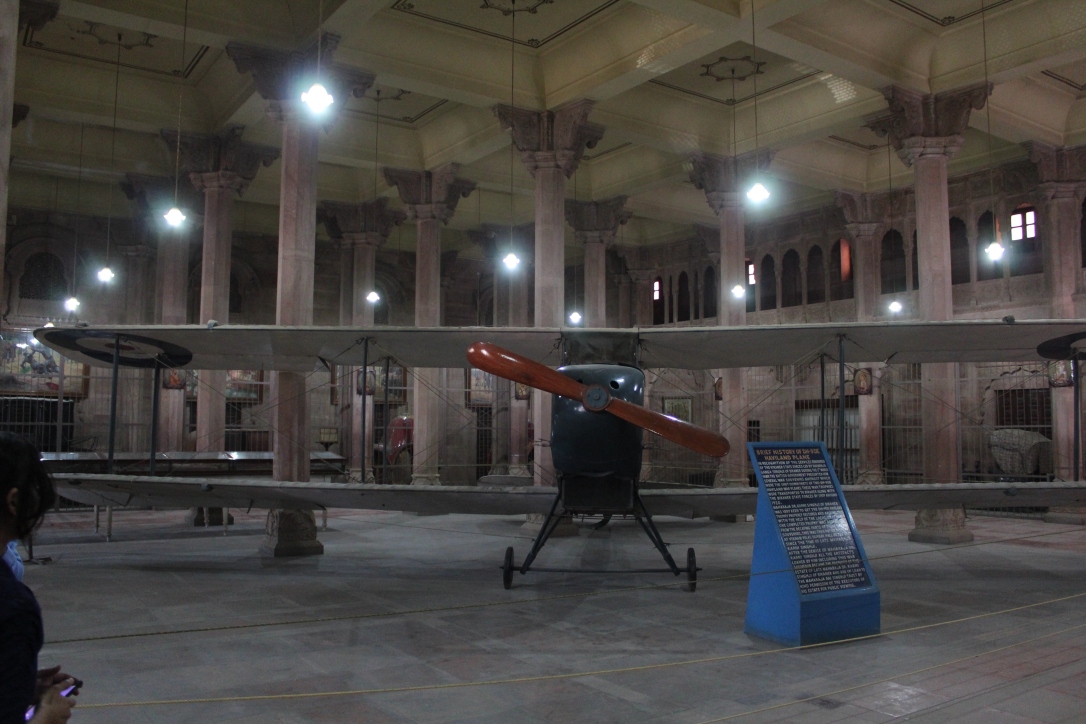
To fill the sense of vacuum, after seeing this fort we were little confused. Then Satyajit Ray, the great Oscar-winning film director came to our rescue. Our driver was very interested in showing us the temple of Baba Ramdev (not the Patanjali one), as we heard that it was near the Ramdevra Railway Station, we agreed.
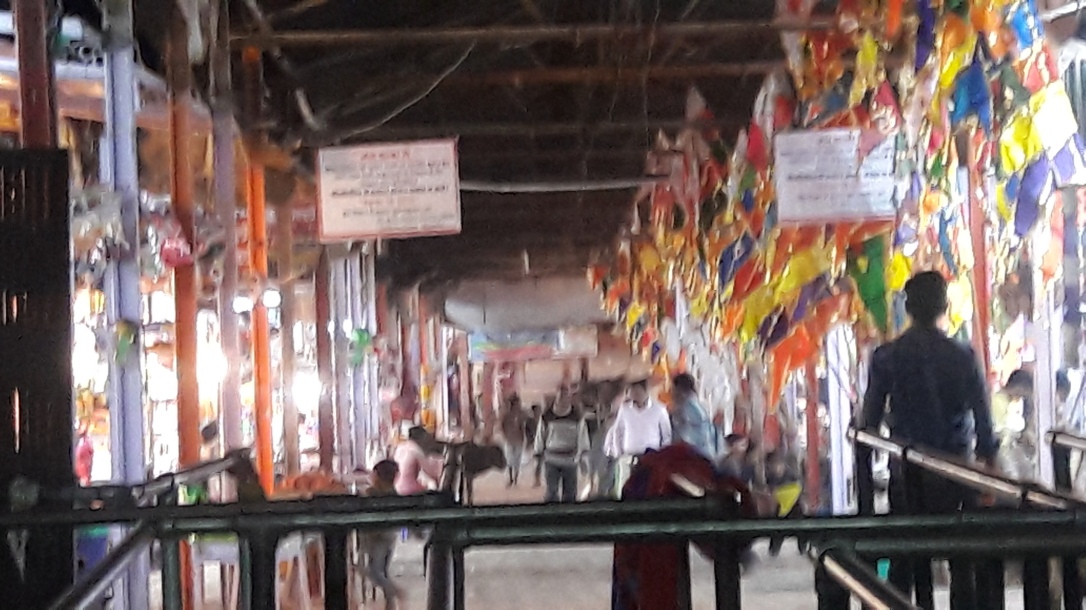
After visiting the temple, we almost ran to the railway station where some part of the movie ‘Sonar Kella” (Bengali Detective Movie) was shot. In the chilling December night, standing on the platform of Ramdevra is a wonderful feeling, a craze which only those who have seen that movie can feel.
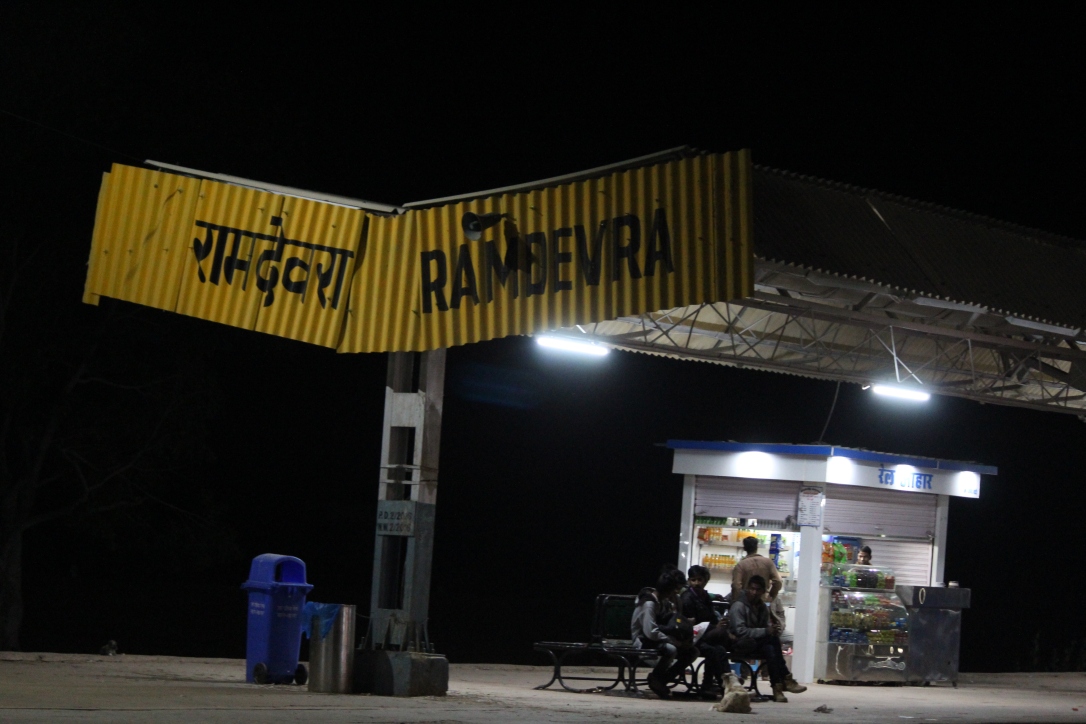
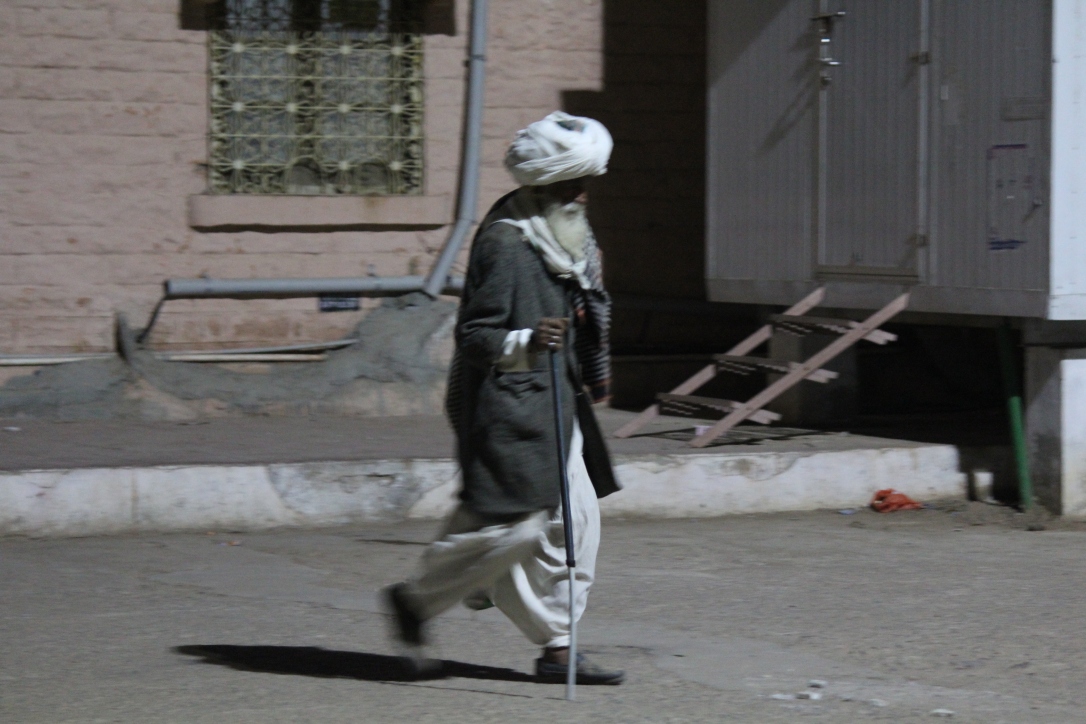
This is what Bikaner has offered me and it is a lifetime treasure for me.
Please read my travel account of Jaipur A family tour to Rajasthan: Jaipur and enjoy Rajasthan.

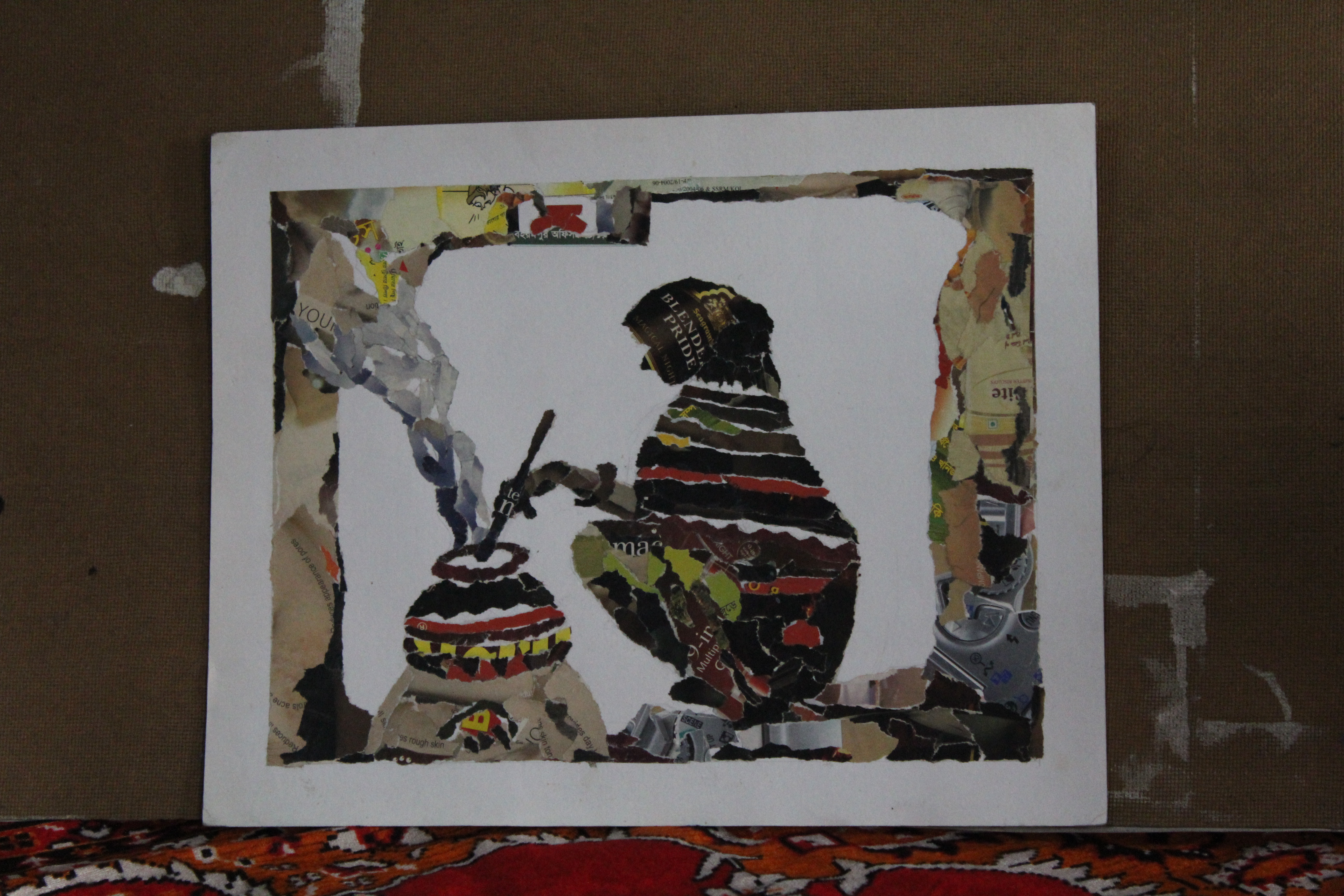

Having read this I thought it was extremely informative.
I appreciate you taking the time and energy to put this article together.
I once again find myself spending a significant amount of time both reading
and leaving comments. But so what, it was still worth it!
LikeLiked by 1 person
I’m glad that you liked it.☺
LikeLike
Beautiful post. Beautiful read with great photographs. Nice one Tandrima.
LikeLiked by 1 person
Your words made my day, Sumith. Thanks a ton.😊
LikeLike
wow very nice captures and lovely blog !
LikeLiked by 1 person
Thank you so much for reading my blog.☺
LikeLike
Having recently been to Bikaner, it was like a revisit. Great travel account Tandrima.
LikeLiked by 1 person
Thank you so much Arv.☺
LikeLiked by 1 person
🙂
LikeLiked by 1 person
You know Tandrima we loved our trip to Bikaner as well …. though there are still certain things to explore which we did not as it was pretty hot and humid when we went. We simply enjoyed our time and your post says you did too. Your blog brought back many memories related to Bikaner 🙂 Happy Travelling!
LikeLiked by 1 person
It is my pleasure that my blog gave you back your good memories. Yes, Rajasthan is very hot.I think from the end of December to February is the ideal time to visit this state. Thank you so much for sharing your feelings with me. 😊😊.
LikeLiked by 1 person
Yes Rajasthan is a winter destination. Glad we came across each other’s blog. Stay connected 🙂
LikeLiked by 1 person